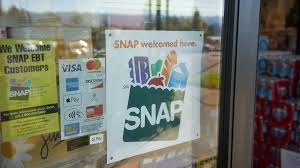In Washington, a new proposal under consideration by House Republicans could have a major impact on the Supplemental Nutrition Assistance Program (SNAP), a program that helps millions of low-income Americans buy food. With the goal of reducing federal spending, Republicans are discussing ways to cut social programs, and SNAP is one of the primary targets.
What is SNAP, and Why Are Republicans Targeting It?
The Supplemental Nutrition Assistance Program, also known as SNAP, currently helps over 22 million households across the U.S. The program provides an average of $350 per month to low-income families to help them purchase food at grocery stores. However, Republicans argue that the program needs reform. They believe it encourages people to rely on government aid rather than work, which is why they are pushing for changes.
The proposal includes a significant reduction in SNAP benefits, which could drop by about 20%. This could translate into a reduction of $247 billion over the next decade. It is one of the largest cuts on a list of proposed spending reforms, which add up to more than $5 trillion in overall cuts. While these proposals are still being discussed, they have already sparked intense reactions.
A Major Blow to Low-Income Families and Farmers
Rep. Angie Craig, a Democrat from Minnesota, criticized the proposal, saying that it would harm vulnerable communities. “This not only means taking food from hungry children but also reducing the demand for the food our farmers produce, manufacturers package, truckers haul, and grocery store clerks stock on the shelves,” she said. Craig’s statement highlights how these cuts could affect not just the families who rely on SNAP, but also the broader economy, especially those working in food production and distribution.
The proposed cut to SNAP benefits would be one of the largest reductions in federal spending, and it could have far-reaching effects. Advocates for low-income families are concerned that the cuts would worsen food insecurity for millions of people across the country.
The Debate Around SNAP Benefits and Work Requirements
Republicans have long pushed for changes to SNAP, citing concerns that it discourages people from working. They argue that the program should have stricter “work requirements” and that people should only be able to access benefits if they are employed or actively seeking work. While some members of the GOP are pushing for a reduction in SNAP benefits, others are focusing on making it more difficult to qualify for the program in the first place.
During a spending standoff in 2023, Republicans pushed for stricter work requirements for SNAP, while also calling for looser eligibility criteria for homeless people and veterans. There has been ongoing debate within the Republican Party itself about how far to go with cuts to social programs like SNAP.
The SNAP Cut Proposal: What Will Happen Next?
The proposal to cut SNAP benefits is part of a broader Republican agenda to reduce government spending. With President-elect Donald Trump ruling out cuts to Social Security and Medicare, Republicans are looking for other areas to trim. The SNAP cut would save a significant amount of money, but it could face strong opposition, even from within the Republican Party.
The proposed cuts to SNAP would be part of a larger budgetary reform plan, which includes cuts to Medicaid, a program that provides health care for low-income Americans. Some Republicans believe that cutting these programs is necessary to reduce the national deficit, but many Democrats and advocacy groups argue that the cuts would disproportionately harm those who are already struggling.
SNAP’s Role in the U.S. Economy and Society
SNAP is an important safety net for millions of Americans, and the benefits it provides have a direct impact on the economy. When families receive SNAP benefits, they use them to buy food at grocery stores, which supports local businesses. Reducing the amount of money available to these families could decrease consumer spending, which in turn could hurt the broader economy.
In addition, reducing SNAP benefits could have a negative effect on health outcomes. Studies have shown that people who receive food assistance are more likely to have better health outcomes than those who do not. If benefits are reduced, it could make it more difficult for families to afford nutritious food, leading to poor health and increased healthcare costs.
Looking Ahead: What Does This Mean for the Future of SNAP?
The debate over SNAP cuts is far from over, and it will likely be a key issue in the upcoming sessions of Congress. Republicans have made it clear that they are determined to reduce government spending, and SNAP is one of the programs they are targeting. However, the cuts are expected to face strong opposition, both from Democrats and from Republicans who are concerned about the impact on their constituents.
As lawmakers continue to discuss these proposals, it is important to consider the consequences of cutting SNAP benefits. While reducing federal spending is important, it is equally important to ensure that vulnerable populations, including low-income families, children, and seniors, are not left behind. The future of SNAP is uncertain, but the discussions happening in Washington will shape the program for years to come.
Disclaimer – Our team has carefully fact-checked this article to make sure it’s accurate and free from any misinformation. We’re dedicated to keeping our content honest and reliable for our readers.








